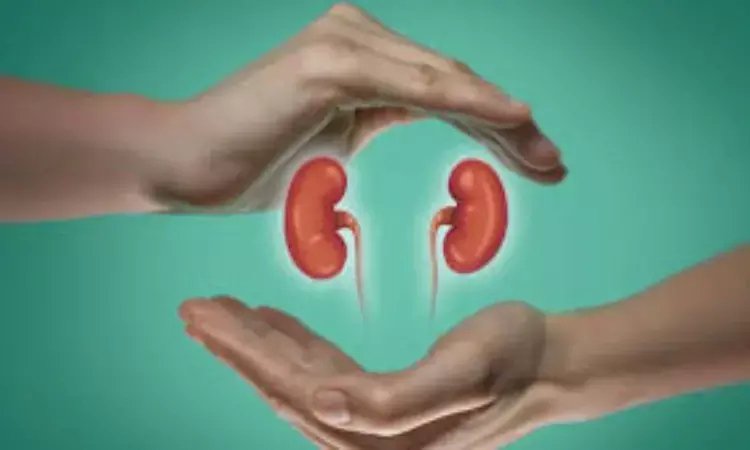- Home
- Medical news & Guidelines
- Anesthesiology
- Cardiology and CTVS
- Critical Care
- Dentistry
- Dermatology
- Diabetes and Endocrinology
- ENT
- Gastroenterology
- Medicine
- Nephrology
- Neurology
- Obstretics-Gynaecology
- Oncology
- Ophthalmology
- Orthopaedics
- Pediatrics-Neonatology
- Psychiatry
- Pulmonology
- Radiology
- Surgery
- Urology
- Laboratory Medicine
- Diet
- Nursing
- Paramedical
- Physiotherapy
- Health news
- Fact Check
- Bone Health Fact Check
- Brain Health Fact Check
- Cancer Related Fact Check
- Child Care Fact Check
- Dental and oral health fact check
- Diabetes and metabolic health fact check
- Diet and Nutrition Fact Check
- Eye and ENT Care Fact Check
- Fitness fact check
- Gut health fact check
- Heart health fact check
- Kidney health fact check
- Medical education fact check
- Men's health fact check
- Respiratory fact check
- Skin and hair care fact check
- Vaccine and Immunization fact check
- Women's health fact check
- AYUSH
- State News
- Andaman and Nicobar Islands
- Andhra Pradesh
- Arunachal Pradesh
- Assam
- Bihar
- Chandigarh
- Chattisgarh
- Dadra and Nagar Haveli
- Daman and Diu
- Delhi
- Goa
- Gujarat
- Haryana
- Himachal Pradesh
- Jammu & Kashmir
- Jharkhand
- Karnataka
- Kerala
- Ladakh
- Lakshadweep
- Madhya Pradesh
- Maharashtra
- Manipur
- Meghalaya
- Mizoram
- Nagaland
- Odisha
- Puducherry
- Punjab
- Rajasthan
- Sikkim
- Tamil Nadu
- Telangana
- Tripura
- Uttar Pradesh
- Uttrakhand
- West Bengal
- Medical Education
- Industry
Oxidative Stress in Severe CKD Patients may Mediate Decline in BMD and Osteoporosis Development: Study Finds

Egypt: Researchers have found in a new study that patients with chronic kidney disease (CKD), especially in stages 3-5, have low bone mineral density (BMD), increasing their risk of osteoporosis (OP). Also, a negative correlation exists between CKD severity and BMD and between oxidative stress (OS) and BMD. OS may contribute to the development of osteoporosis in CKD patients.
The cross-sectional study, published in BMC Nephrology, explored the link between oxidative stress and bone mineral density among Egyptian patients with varying stages of CKD. While osteoporosis is already recognized as a common complication in CKD, the exact role of oxidative stress in driving bone loss has remained uncertain. Samah M. Akab, Department of Internal Medicine, Faculty of Medicine (Girls), Al-Azhar University, Cairo, Egypt, and colleagues aimed to clarify this relationship to guide better prevention strategies.
For this purpose, the researchers conducted a case-control study involving 150 adults with CKD (stages 1 to 5 based on the 2024 KDIGO guidelines) and 150 healthy controls. The CKD participants were categorized into three groups: stages 1–2, 3–4, and stage 5, based on their estimated glomerular filtration rate. Bone mineral density was measured at three sites—lumbar spine, femur neck, and distal radius—using dual-energy X-ray absorptiometry (DEXA). Additionally, oxidative stress markers, including 8-hydroxy-2’-deoxyguanosine (8-OHdG) and malondialdehyde (MDA), were evaluated, along with paraoxonase-1 (PON1), an indicator of antioxidant defense.
The study led to the following findings:
- Patients with chronic kidney disease (CKD) had lower bone mineral density (BMD) T-scores compared to healthy individuals.
- BMD measurements at the lumbar spine (LS), femur neck (FN), and distal radius (DR) varied significantly across different CKD stages.
- Post hoc analysis showed that patients in CKD stages I–II had higher BMD scores at all three sites compared to those in stages III-IV and stage V.
- No notable differences in BMD scores were observed between CKD stages III–IV and V.
- Levels of oxidative stress (OS) markers—8-OHdG and MDA—increased as CKD progressed.
- Antioxidant activity, indicated by PON-1 levels, decreased with increasing CKD severity.
- A significant positive correlation was found between PON-1 levels and BMD.
- Higher levels of 8-OHdG and MDA were linked to lower BMD, showing a negative correlation.
- 8-OHdG and MDA levels were positively associated with elevated alkaline phosphatase and phosphorus levels.
- These oxidative stress markers were negatively correlated with calcium and vitamin D levels.
- PON-1 levels showed a significant positive correlation with both vitamin D and calcium.
The findings highlight that oxidative stress not only worsens with CKD progression but may also play a significant role in weakening bone structure, thereby contributing to osteoporosis risk. According to the authors, addressing oxidative stress could be a valuable approach to preserving bone health among CKD patients.
The research underlines the need for early screening and management strategies targeting oxidative stress to reduce the burden of osteoporosis in individuals with chronic kidney disease.
Reference:
Akab, S.M., Abozeid, H.E., Elazab, S.A. et al. Relation between bone mineral density and oxidative stress in Egyptian patients with chronic kidney disease: a cross sectional study. BMC Nephrol 26, 197 (2025). https://doi.org/10.1186/s12882-025-04099-y
Dr Kamal Kant Kohli-MBBS, DTCD- a chest specialist with more than 30 years of practice and a flair for writing clinical articles, Dr Kamal Kant Kohli joined Medical Dialogues as a Chief Editor of Medical News. Besides writing articles, as an editor, he proofreads and verifies all the medical content published on Medical Dialogues including those coming from journals, studies,medical conferences,guidelines etc. Email: drkohli@medicaldialogues.in. Contact no. 011-43720751


